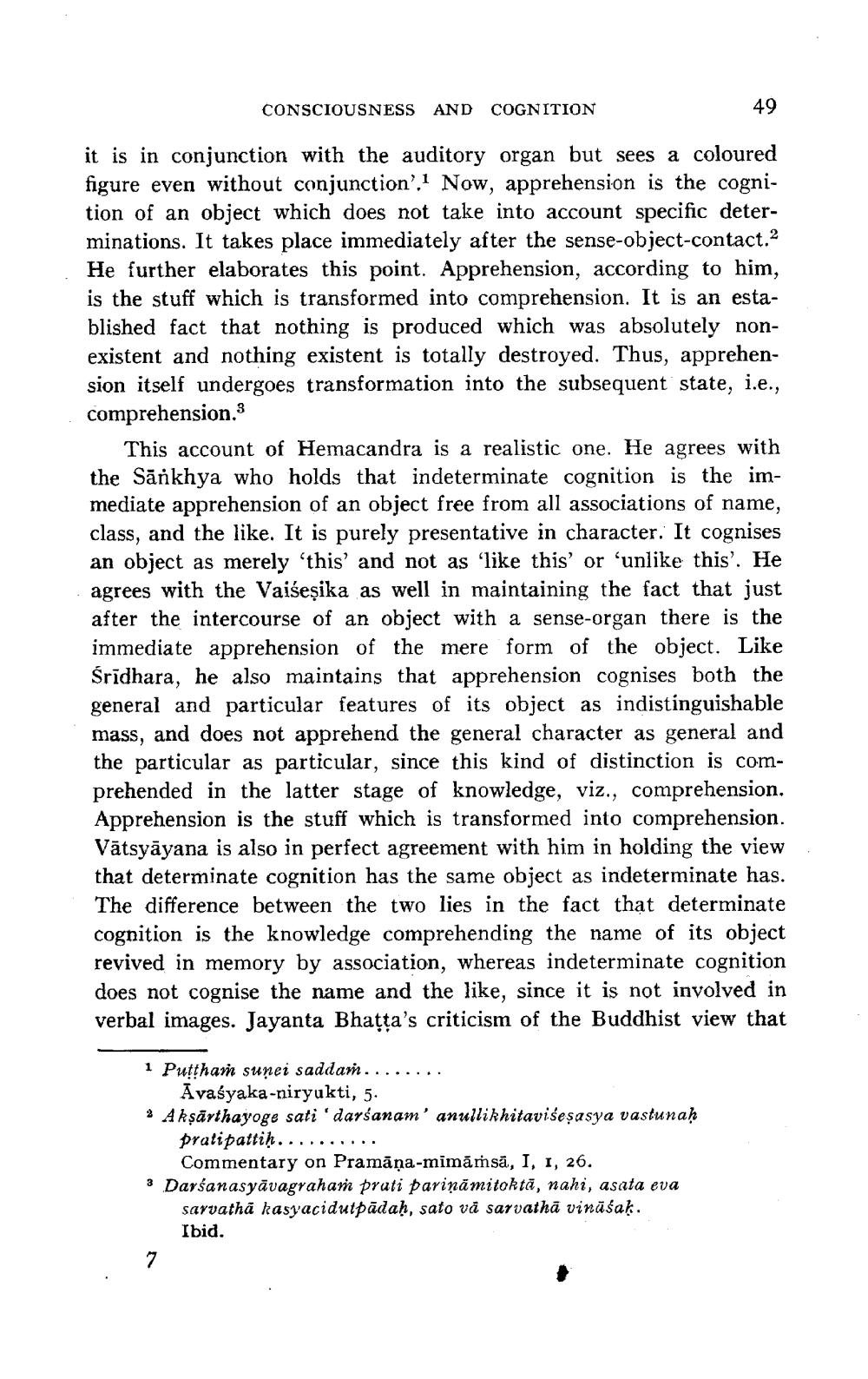________________
CONSCIOUSNESS AND COGNITION
49
it is in conjunction with the auditory organ but sees a coloured figure even without conjunction'.' Now, apprehension is the cognition of an object which does not take into account specific determinations. It takes place immediately after the sense-object-contact.2 He further elaborates this point. Apprehension, according to him, is the stuff which is transformed into comprehension. It is an established fact that nothing is produced which was absolutely nonexistent and nothing existent is totally destroyed. Thus, apprehension itself undergoes transformation into the subsequent state, i.e., comprehension.
This account of Hemacandra is a realistic one. He agrees with the Sānkhya who holds that indeterminate cognition is the immediate apprehension of an object free from all associations of name, class, and the like. It is purely presentative in character. It cognises an object as merely 'this' and not as 'like this' or 'unlike this'. He agrees with the Vaiseșika as well in maintaining the fact that just after the intercourse of an object with a sense-organ there is the immediate apprehension of the mere form of the object. Like Śrīdhara, he also maintains that apprehension cognises both the general and particular features of its object as indistinguishable mass, and does not apprehend the general character as general and the particular as particular, since this kind of distinction is comprehended in the latter stage of knowledge, viz., comprehension. Apprehension is the stuff which is transformed into comprehension. Vātsyāyana is also in perfect agreement with him in holding the view that determinate cognition has the same object as indeterminate has. The difference between the two lies in the fact that determinate cognition is the knowledge comprehending the name of its object revived in memory by association, whereas indeterminate cognition does not cognise the name and the like, since it is not involved in verbal images. Jayanta Bhatta's criticism of the Buddhist view that
1 Putthaṁ sunei saddam........
Avaśyaka-niryukti, 5. * Akşarthayoge sati 'darśanam' anullikhitavićeşasya vastunaḥ
pratipattih..........
Commentary on Pramāņa-mimārsā, I, I, 26. 3 Darśanasyāvagraham pruti pariņāmitoktā, nahi, asata eva
sarvathā kasyacidutpādaḥ, sato vă sarvathā vināśak. Ibid.




